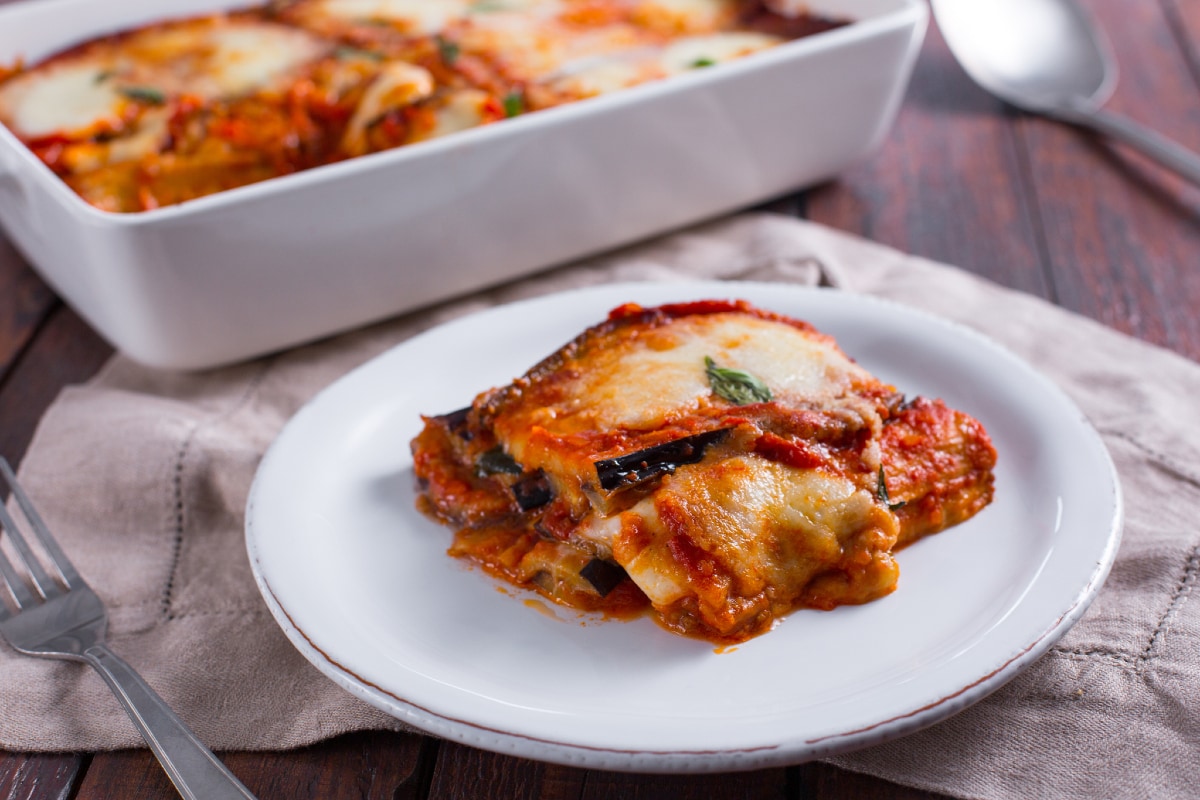Pasta with eggplant cream and cherry tomatoes
- Easy
- 1 h 10 min


Rich comfort and a hearty texture make eggplant parmigiana a family favorite at any table. With layers of baked eggplant boasting a beautifully crispy finish, this dish stands out for its golden color and the glossy, savory pull of melted mozzarella cheese. When you cut into it, you get those inviting, soft, golden slices surrounded by tangy marinara and gooey cheese…a DELICIOUS combination that draws everyone in from the first bite. Weekends and special dinners often call for this classic eggplant parmesan recipe, since its pretty look and flavorful layers fit right in with big get-togethers. Families love the good flavor and the way every bite mixes tender eggplant, crunchy coating, and the rich, herby tomato sauce—which feels a lot like a favorite Italian recipe, just with even more comfort and a slightly lighter feel compared to meals with pasta. You’ll notice everyone goes for seconds (trust me, it disappears quickly at any family gathering).
Kids and parents both appreciate how this eggplant parmigiana makes mealtime feel special but still stays easygoing—great for busy nights or relaxed Sunday suppers. You can serve it with a simple green salad or a nice loaf of bread for a filling meal that feels pretty satisfying without needing any meat. Baked eggplant keeps it lighter than fried options, while the cheesy topping gives plenty of cozy flavor…if you like, a sprinkle of extra mozzarella or fresh basil works nicely. It’s really nice how this eggplant parmesan stands on its own or slides right into a buffet for larger groups—easy, impressive, and family-friendly all at the same time. Vegetarians and meat-eaters both enjoy it, especially on those nights when something easy and classic is the way to go. The great taste, eye-catching crusty layers, and warm, cheesy finish make it a go-to for any home cook wanting a reliable, crowd-pleasing Italian recipe that feels special but fits busy family life. Even picky eaters tend to love the combination of moist, tender eggplant and crispy eggplant—so it gets a lot of repeat requests in most kitchens!
You might also like:

To make the eggplant parmigiana, start with the sauce. Peel and chop the onion 1. Add enough olive oil to a pot to cover the bottom and heat 2. Then add the onion to the pot. Let it brown for a couple of minutes, stirring often so it doesn't burn, then add the tomato purée 3.

Season with salt and add the basil leaves 4. Add a little water to the container the tomato purée was in to rinse it, pouring the water into the pot. Let this cook for 45-50 minutes over low heat 5. In the meantime, cut the fiordilatte cheese into small cubes, setting aside one piece that you’ll use at the end 6.

Place the cheese cubes to drain in a colander positioned in a bowl 7, then cover with plastic wrap and set aside: This will allow the excess liquid to drain off 8. Now, turn to the eggplant: Wash and trim them 9.

Cut them lengthwise into slices around 1/4 inch (4-5 mm) thick 10. Once sliced, fry the eggplant in peanut oil that’s been heated to 340°F (170°C), immersing a few slices at a time 11. As soon as they’ve turned slightly golden, drain on a tray lined with paper towel 12.

If you run out of space on the tray, place more paper towel 13 on top of the eggplant that are draining to create another layer with the newly fried eggplant 14. Lastly, move on to the assembly: Start by adding some of the tomato sauce to a 9x13-inch (20x30-cm) baking dish 15.

Form the first layer by arranging the fried eggplant slices in the dish 16, then spooning over more sauce 17, spreading it evenly, and sprinkling in cubes of fiordilatte 18.

Sprinkle with grated Parmigiano Reggiano cheese 19 and some basil leaves 20. Start a new layer by adding more tomato sauce 21 and fried eggplant slices, which should be arranged facing opposite directions.

Then add more cheese and basil leaves 22. Repeat these steps until you reach the last layer of eggplant 23, again adding sauce and the fiordilatte that you set aside, torn into pieces by hand 24.

Finish off with grated Parmigiano cheese 25 and bake in a conventional oven preheated to 390°F (200°C) for around 30 minutes 26. When the eggplant parmigiana is finished baking, let it rest for 15-20 minutes before serving 27.